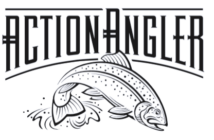From TRCP:
Implementation of the federal Clean Water Act – and the conservation of crucial water resources and wildlife habitat – should improve thanks to a report released today by the Environmental Protection Agency, which also submitted a rule clarifying Clean Water Act jurisdiction to the Office of Management and Budget for interagency review.
The report, released by the Environmental Protection Agency’s Scientific Advisory Board, synthesizes more than a thousand peer-reviewed scientific articles on the biological, chemical and hydrologic connectivity of waters and the effects that small streams, wetlands and open waters have on larger downstream waters. It is open for a 45-day public comment period.
The rule, which would replace existing agency guidance, is intended to more clearly define which U.S. waters are subject to protections under the Clean Water Act. OMB has 90 days to complete the interagency review.
Both the new report and the rule-making process elicited applause from some of the nation’s top sportsmen’s organizations. The Izaak Walton League of America, the National Wildlife Federation, the Theodore Roosevelt Conservation Partnership and Trout Unlimited commended the administration for taking steps to restore Clean Water Act protections to streams and wetlands.
“We commend the agencies for moving forward with a scientifically grounded rulemaking that all sides of this issue have called for,” said Jimmy Hague, director of the TRCP’s Center for Water Resources. “The economic benefits to the United States from these wetlands and streams are staggering. Hunting and fishing alone generate $200 billion in total economic activity each year. Restoring protections for these waters benefits the American people, fish and wildlife, and outdoor recreation, including hunting, fishing and boating.”
“Water is the lifeblood of our nation, and it is about time that we start treating it as such,” said Steve Moyer, vice president for government affairs at Trout Unlimited. “The steps taken today by the EPA and Corps start to clear away the fog of the jurisdictional debates and begin the process of getting us on firm scientific ground for protecting vital headwater streams and wetlands.”
Supreme Court decisions in SWANCC (2001) and Rapanos (2006) and agency guidance issued in 2003 and 2008 jeopardize many of the nation’s wetlands and waters. Taken together, they removed protections for at least 20 million acres of wetlands, particularly prairie potholes and other seasonal wetlands essential to waterfowl. Intermittent streams that provide critical habitat for fish, especially trout, and affect drinking water for more than 117 million Americans also are at risk.
“More than half of America’s rivers and streams are in poor condition, we have drained or destroyed half of the wetlands in the lower 48 states, and wetland loss continues at an alarming rate,” said Jan Goldman-Carter, wetlands and water resources counsel for the National Wildlife Federation. “This new report demonstrates how streams and wetlands influence lakes, rivers and bays downstream. It gives us a strong scientific basis to answer the critical question of which bodies of water need to be protected to maintain and restore the nation’s waters.”
However, EPA did not address today the status of draft jurisdictional guidance that EPA and the U.S. Army Corps of Engineers first submitted to OMB in February 2011, though it has been reported that the guidance has been withdrawn. In August, leading sportsmen’s organizations urged the OMB to finalize the proposed guidance.
“We are losing valuable water resources and habitat today, as wetlands are drained and headwaters are vulnerable to pollution,” said Mike Leahy, conservation director at the Izaak Walton League of America. “While the rulemaking process is underway, the administration should begin protecting some of these resources by promptly issuing, instead of withdrawing, Clean Water Act guidance.”
Learn more about the scientific report.
For more information on the TRCP visit our website.
Connect with us on Facebook.
Follow us on Twitter.



